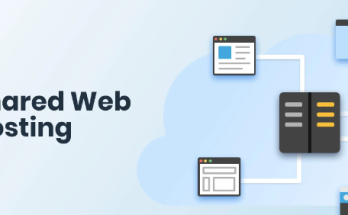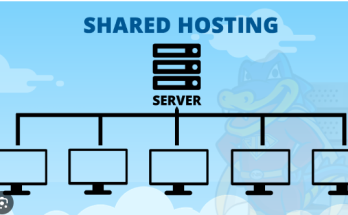In the vast landscape of cloud hosting services, Google Cloud has emerged as a key player, providing a robust infrastructure for businesses and individuals alike. However, understanding the costs associated with hosting on Google Cloud is crucial for making informed decisions. In this guide, we will delve into the intricacies of Google Cloud hosting pricing, step by step.
1. Understanding Google Cloud Services
Before we dive into the cost details, let’s briefly explore the services offered by Google Cloud. Google Cloud Platform (GCP) provides a wide array of cloud computing services, including computing power, storage, databases, machine learning, and more. These services are designed to help users build, deploy, and scale applications efficiently.
2. Compute Engine: The Heart of Google Cloud Hosting
At the core of Google Cloud hosting is the Compute Engine. This service allows users to run virtual machines (VMs) on Google’s infrastructure. The pricing for Compute Engine is based on several factors, including the type of VM instance, the region where it is deployed, and the duration it runs.
3. Virtual Machine Types and Pricing
Google Cloud offers various types of VM instances optimized for different workloads. These include general-purpose, memory-optimized, and compute-optimized instances. Each instance type comes with its own pricing structure, allowing users to choose the right balance of resources for their applications.
4. Understanding Sustained Use Discounts
Google Cloud provides Sustained Use Discounts to users who run VM instances continuously throughout the month. As the instance runs for a more extended period, the discount increases, offering a cost-effective solution for consistent workloads.
5. Additional Costs: Disk Storage and Networking
In addition to compute costs, users must consider expenses related to storage and networking. Google Cloud offers various types of storage options, such as standard persistent disks and solid-state drives (SSDs), each with its own pricing. Networking costs depend on factors like data transfer between regions and external internet egress.
6. Database Services: Beyond Compute
Google Cloud provides managed database services like Cloud SQL, Cloud Spanner, and Bigtable. Understanding the pricing of these services is crucial for those relying on databases to power their applications.
7. Pricing for Data Storage in Databases
Database storage costs are calculated separately from compute costs. Cloud SQL, for example, charges based on the provisioned storage capacity, while Cloud Spanner’s pricing considers the amount of data stored and the number of nodes in use.
8. Data Transfer Costs: Navigating the Bandwidth Charges
Google Cloud imposes charges for data transfer, both within its network and to external destinations. Users should be mindful of the data transfer costs, especially if their applications involve a significant amount of data movement.
9. Machine Learning: Exploring AI-Driven Costs
For users leveraging Google Cloud’s machine learning services, such as AI Platform and AutoML, it’s essential to understand the pricing model for these advanced capabilities. Costs may vary based on factors like training time, prediction requests, and model storage.
10. Monitoring and Management Tools: Factoring in Additional Charges
Google Cloud offers various monitoring and management tools like Stackdriver, which provide insights into application performance and health. While these tools are invaluable, users should be aware of any associated costs.
11. Billing and Cost Management
Google Cloud provides a comprehensive billing and cost management interface that allows users to monitor their expenses, set budgets, and receive alerts. Understanding how to navigate this interface is crucial for keeping hosting costs within budget.
12. Optimizing Costs: Best Practices
To ensure cost-effectiveness, users can implement various optimization strategies. This includes rightsizing VM instances, leveraging preemptible instances for non-critical workloads, and exploring committed use discounts for long-term commitments.
Conclusion
In conclusion, hosting on Google Cloud offers a powerful and scalable solution, but understanding the pricing intricacies is paramount for effective cost management. By breaking down the costs step by step, users can make informed decisions, optimize their infrastructure, and harness the full potential of Google Cloud hosting for their applications.
Understanding Google Hosting: A Comprehensive Guide
In the vast realm of web hosting, Google stands out as a prominent player, offering a range of services that cater to individuals, businesses, and developers alike. In this article, we’ll delve into the details of Google hosting, exploring its features, pricing structures, and the steps involved in getting started.
What is Google Hosting?
Google’s hosting services primarily revolve around Google Cloud Platform (GCP), a suite of cloud computing services that includes hosting solutions. GCP provides infrastructure as a service (IaaS), platform as a service (PaaS), and software as a service (SaaS), enabling users to build, deploy, and scale applications seamlessly.
Google Cloud Platform (GCP) Features
Compute Engine: This is Google’s Infrastructure as a Service (IaaS) offering, allowing users to run virtual machines on Google’s infrastructure. It provides high-performance computing power for a wide range of applications.
App Engine: As a Platform as a Service (PaaS) offering, App Engine enables users to build and deploy applications without managing the underlying infrastructure. It’s an excellent choice for developers seeking scalability and ease of use.
Google Kubernetes Engine (GKE): This service facilitates the orchestration and management of containerized applications using Kubernetes. It’s a powerful tool for deploying, managing, and scaling containerized applications using Google’s infrastructure.
Cloud Functions: For serverless computing, Cloud Functions allows developers to run individual functions in response to events without the need for server provisioning or management.
How Much Does Google Hosting Cost?
Understanding the cost of Google hosting involves considering various factors, and Google Cloud Platform employs a pay-as-you-go pricing model. Let’s break down the key components that contribute to the overall cost:
1. Compute Engine Pricing
Compute Engine pricing is based on factors such as virtual machine instance type, region, and usage. Users are billed per second with a one-minute minimum usage cost. It’s crucial to choose the right instance type and size for your specific needs to optimize costs.
2. App Engine Pricing
App Engine pricing is determined by the number of instances, the amount of data stored, and the volume of data processed. The pricing model is designed to be flexible, allowing users to pay for the resources they consume.
3. Google Kubernetes Engine (GKE) Pricing
GKE pricing considers factors like the number and type of nodes, storage, and networking. Users are billed for the resources allocated to their Kubernetes clusters.
4. Cloud Functions Pricing
Cloud Functions pricing is based on the number of invocations, execution time, and the amount of resources consumed during function execution. It follows a granular model where users pay for the specific resources used by their functions.
Additional Considerations
Storage Costs: Depending on your storage needs, additional costs may arise. Google Cloud Storage and Persistent Disks have their pricing structures, and it’s essential to estimate your storage requirements accurately.
Data Transfer Costs: Google Cloud Platform charges for data transfer between regions and to the internet. Understanding your data transfer patterns helps in estimating these costs.
Steps to Get Started with Google Hosting
Now that we have an understanding of Google hosting and its associated costs, let’s walk through the steps to get started:
1. Create a Google Cloud Platform Account
Visit the Google Cloud Platform website and sign in with your Google account or create a new one. Once logged in, you can set up a new project.
2. Set Up a Project
Create a new project within the Google Cloud Console. Projects serve as containers for resources, allowing you to organize and manage them effectively. Choose a project name and proceed to set up billing for the project.
3. Enable Billing
To use Google Cloud Platform services, you need to enable billing for your project. Provide the necessary billing information, and Google will guide you through the setup process.
4. Explore the Google Cloud Console
Navigate through the Google Cloud Console to explore the various services offered. Familiarize yourself with Compute Engine, App Engine, Kubernetes Engine, and other available options.
5. Deploy Your Application
Depending on your hosting needs, deploy your application using the appropriate service. For example, if you have a containerized application, consider using Google Kubernetes Engine. If simplicity is a priority, App Engine might be the right choice.
6. Monitor and Optimize
After deployment, use Google Cloud Monitoring and other tools to monitor the performance of your applications. Optimize resources based on usage patterns to ensure cost efficiency.
7. Scale as Needed
Google Cloud Platform provides scalable solutions. As your application grows, utilize the scalability features of Compute Engine, App Engine, or Kubernetes Engine to handle increased traffic and demand.
Conclusion
Google hosting, through its Google Cloud Platform, offers a robust and scalable solution for hosting applications and services. By understanding the pricing model and following the steps outlined in this guide, you can leverage Google hosting to meet your specific needs. Whether you’re an individual developer, a startup, or a large enterprise, Google hosting provides the flexibility and power required for modern web applications.



